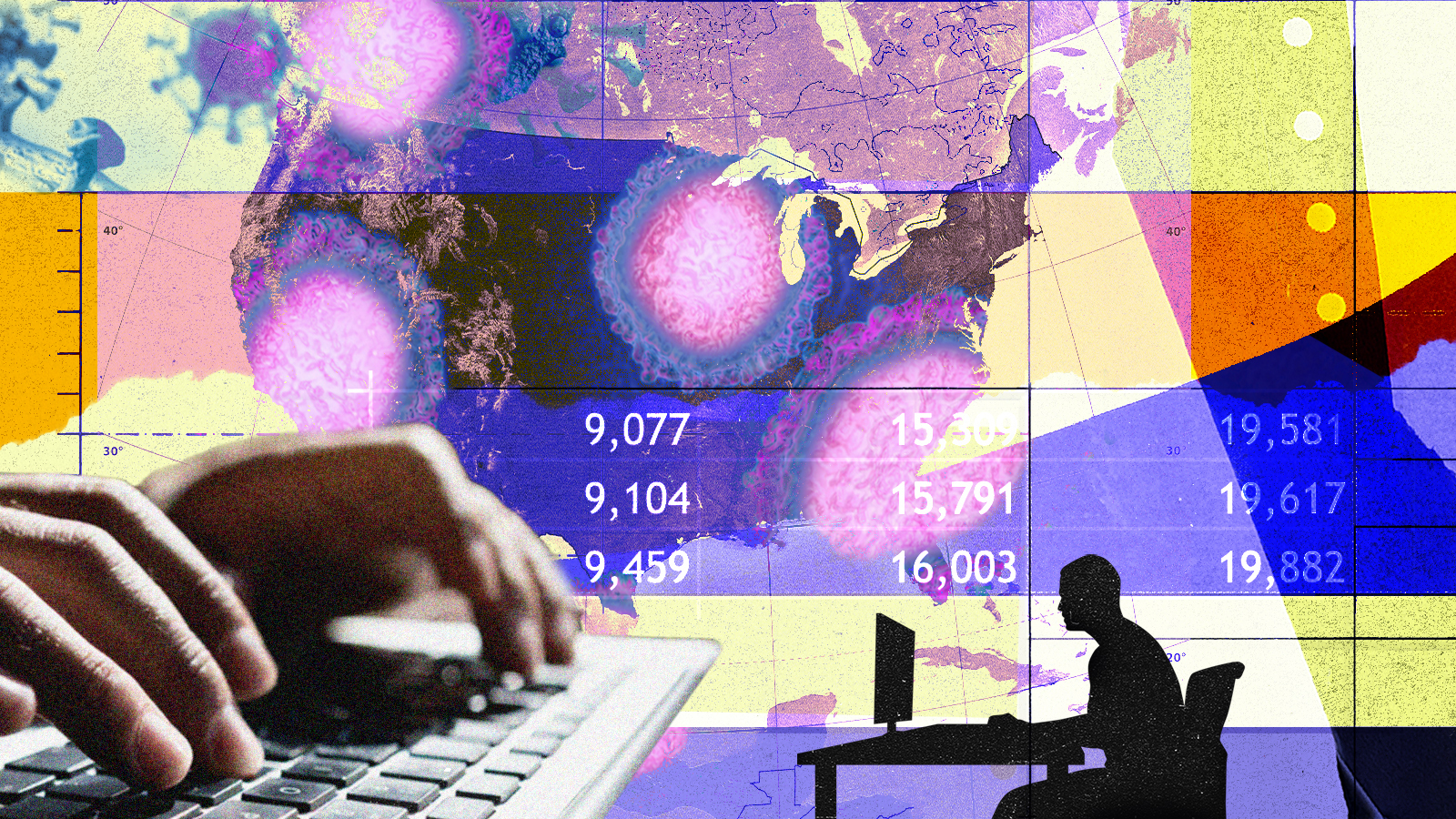Categories
COVID-19 Data Journalism PodcastsDespite the United States being the most prepared country to fight a global pandemic, the country led the world in confirmed COVID-19 cases and deaths. More than 1.1 million people died, and more than 103 million were diagnosed with COVID as of March of 2023.
It became clear early in 2020 that the federal government was foundering; the Centers for Disease Control didn’t have what it needed to lead the way out of nationwide lockdowns.
But where the government failed, citizens stepped up.
How a group of journalists, doctors, high school students, retired teachers and many others ended up providing the country with the most-trusted pandemic data is the story behind a new audio documentary, “The COVID Tracking Project.”
I happen to be one of those people.
—
It was just another day in early April of 2020 in my childhood bedroom in San Jose, California. My county was one of the first in the country to issue a shelter-in-place order.
My alarm went off at 4:58 a.m. to wake me for my 5 a.m. International Economics class on Zoom. It was pitch black. I still hadn’t brought a lamp into this room that I left two years ago when I went to college at American University.
The pandemic shut everything down, and I found myself in my parents’ house about to log onto that class that used to be in person at 8 a.m. ET.
Still early into stay-at-home orders, I had a new routine — zoom classes, those endless walks outside and the largest wave of uncertainty I had ever felt in my life.
I wasn’t alone. Like many of those around the country, my eyes were glued to my computer, looking for answers about an unprecedented virus. I was clinging to any hope that my life would return to normal.
But everywhere I looked, it seemed like the most powerful governing body — the U.S. federal government — had no idea how bad the spread of this virus was. In fact, nobody had a clue.
Simple questions like how many cases were in my hometown and how many tests were available were hard to come by.
In April of 2020, The Centers for Disease Control, the nation’s top public health agency, was not yet releasing nationwide COVID-19 case, death and testing data. The CDC told Americans to default to state information, but the states themselves had different testing and reporting capacities. Legislators were contradicting each other, and some of the country’s top scientists even publicly admitted they had no idea what to do.
I was terrified. So were many others.
In March of 2020, we all had more questions than answers. But what do you do if the federal government is not doing its job?
A group of volunteers formed The COVID Tracking Project to answer that call.
The COVID Tracking Project at The Atlantic was a citizen-driven, collaborative effort to track the spread of COVID-19 across the United States.
It started in March of 2020 with two staff writers at The Atlantic, Alexis Madrigal and Robinson Meyer. Both realized that COVID-19 case and testing data from the federal government was non-existent, and both were worried about how COVID-19 would affect their loved ones.
They created a spreadsheet and sent out emails to every state. They asked how many people had been tested and how many COVID-19 cases were confirmed. Slowly, states started responding, and they recorded the answers. Madrigal and Meyer set out to do this every day until the federal government stepped up.
However, knowing it was a monumental task, they turned to Twitter, asking for volunteers to help with manually sourcing and entering COVID-19 data into a single google spreadsheet.
Both thought they would only do this for a couple weeks until the federal government released public data. Madrigal and Meyer initially just wanted enough information to write a story.
Those planned couple of weeks turned into a project that lasted over a year and a half, and that one spreadsheet turned into multiple data sets that the CDC and the federal government should have built themselves. Most important, those initial few folks who responded to the Twitter call multiplied into hundreds of volunteers and a paid, full-time staff of 30.
From April of 2020 to March of 2021, the federal government didn’t end up filling that gap so the public did.
I started out just like the concerned people who responded to the initial Twitter callout. We all joined for the same reasons. We were looking for information that could save lives, statistics the government was not providing.
The first day I joined in early April of 2020, I clocked 12 hours manually entering COVID-19 case counts into a spreadsheet. Soon after, I joined staff when we started building other datasets that tracked the spread of COVID-19 among race and ethnic lines and for those in long-term care communities. Building COVID-19 datasets became my full-time job.
And a couple months into the pandemic, The COVID Tracking Project became one of the most-trusted sources for accurate and complete pandemic data in the United States.
Driven by a civic need to track the pandemic, these datasets were the first of their kind.
To date, The COVID Tracking Project’s work has been cited in nearly 2,000 academic journals and thousands of news articles, and used by the Johns Hopkins Coronavirus Resource Center. Our datasets informed local and state COVID-19 policy and were used by federal agencies, including the CDC, The Advisory Committee on Immunization Practices, the Department of Health and Human Services and The White House as a way to understand the scope of the pandemic.
From April 2020 to March of 2021, I spent every waking minute building, sourcing and analyzing COVID-19 datasets. I spent both my 20th and 21st birthdays providing pandemic information to the federal government and to the American people. I took a semester off from my undergraduate education to construct methodologies, advise state and local re-opening strategies and write about the communities most impacted by the virus.
Even when restrictions were being lifted later in the pandemic, I couldn’t leave my house. Like others on the project, the very case and death counts that we were cataloging represented many of the loved ones we lost to COVID-19. I felt every case and death.
Three years later, Reveal from the Center for Investigative Reporting and The COVID Tracking Project at The Atlantic joined forces to produce a three-part investigative series explaining how the federal government failed to provide accurate pandemic data.
Through the voices of the volunteers and staff members who collected this data daily, this series describes how a group of citizen-scientists built some of the most trusted COVID-19 datasets in the country.
Artis Curiskis and Kara Oehler, The COVID Tracking Project’s former co-leads for Outreach & Reporting and the Long-Term-Care Tracker, serve as executive producers. The COVID Tracking Project’s former science communication lead, Jessica Malaty Rivera, serves as host. I was a production assistant.
There is an overwhelming consensus from the scientific community that a large portion of COVID-19 deaths in the United States were preventable. More robust testing and accurate COVID-19 data, from the start, would have allowed us to better locate the spread of the virus.
After all, if we do not know where the spread of the virus is, there is no structural pathway for combating it.
Working on this project fundamentally shaped the way I look at data. For those of us who gave everything to this project, the numbers never existed by themselves. They represented the people who lost their lives because of a failed government response, the very real pain of their loved ones and the irreversible consequences of a lack of information.
To this day, I still feel all of it.





